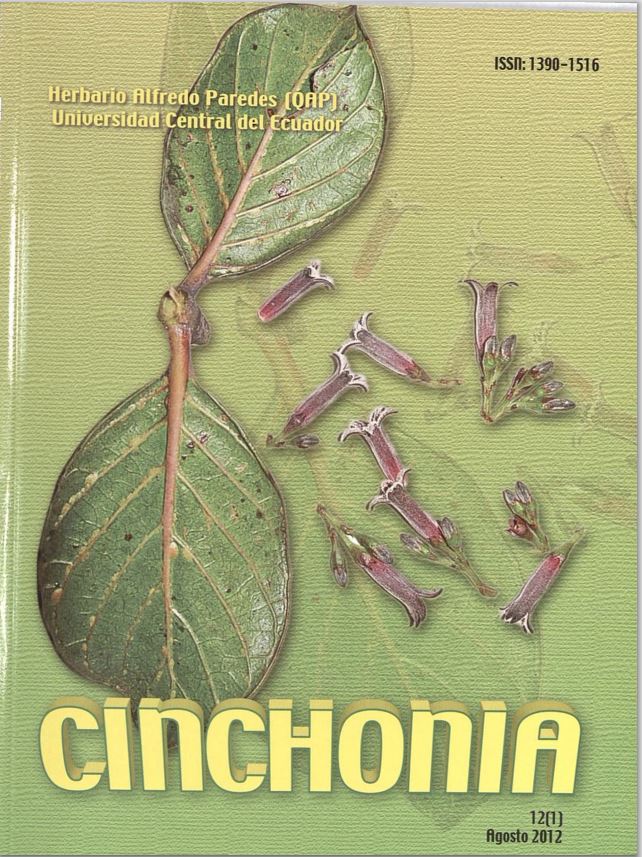Plantas útiles de los Kichwa, centro-norte de la Amazonia ecuatoriana
Contenido principal del artículo
Resumen
Playas del Cuyabeno y Pañacocha, se localizan entre los ríos Aguarico y Napo, provincia de Sucumbíos, en Ecuador, coordenadas (centro) 00°24’19.1’’S - 76°05’05.9’’W, 279 m de altitud, zona de vida: bosque húmedo tropical, formaciones vegetales: bosque siempreverde de tierras bajas inundable por aguas blancas, bosque siempreverde de tierras bajas inundable por aguas negras, y bosque inundable de palmas de tierras bajas. El trabajo de campo, se realizó durante varias salidas de campo en los años 2009, 2010 y 2011; donde se evaluó la vegetación mediante la aplicación de 9 parcelas temporales de ¼ de hectárea para especies ≥10 cm de dap, 10 sets de transectos de 0.1 de hectárea para especies ≥2.5 cm de dap, y colecciones al azar. La información etnobotánica, se obtuvo in situ mediante entrevistas a personas de la nacionalidad Kichwa, ellos son: Silverio Greffa Bustos, Hermas Duende Andi e Isac Tapuy Tuñi. Adicionalmente se consultó la información de las muestras depositadas en el herbario QAP, correspondiente a los sectores: Limoncocha, Shayari, río Yasuní, Yuturi, y Tamia Yura; con los informantes: Domingo Andi, Abel Greffa, Bartolo Papa, Juan Tapuy y Camilo Tapuy. Se obtuvieron los nombres Kichwas y utilidades de 500 especies vegetales; las categorías con mayores usos son: Alimento animal, Combustible, Comercial y Construcción; los verticilos: tallo, fruto, hoja, y corteza, son los más utilizados; mientras que las especies: Dacryodes peruviana “Copal”, Hasseltia floribunda “Sara muyo”, Prunus debilis “Sindi”, Socratea exorrhiza “Chingo” (7 usos), Astrocaryum urostachys “Ramos yura”, Casearia arborea “Guayaba muyo”, Lacistema nena “Payatzo”, Ochroma pyramidale “Yana balsa”, Otoba parvifolia “Huapa yura”, Platymiscium stipulare “Yahuar kaspi”, Richeria racemosa “Camu camu”, y Symphonia globulifera “Barea kaspi” (6 usos), son las que más utilidades proporcionan. La denominación de los nombres en su mayoría son Kichwa, pero también hay de origen Kichwa - Español y Español; formados de dos, y en menor proporción de una, tres y cuatro palabras.

